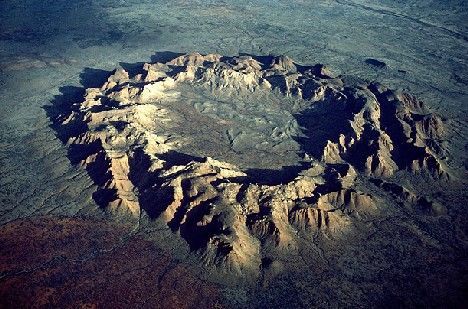第十四章 地下的烈火
In the summer of 1971, a young geologist named Mike Voorhies was scouting around on some grassy farmland in eastern Nebraska, not far from the little town of Orchard, where he had grown up. Passing through a steep-sided gully, he spotted a curious glint in the brush above and clambered up to have a look. What he had seen was the perfectly preserved skull of a young rhinoceros, which had been washed out by recent heavy rains.
1971年夏,一位名叫邁克·沃里斯的年輕地質學家在內布拉斯加州東部一片草木叢生的農田里考察,就在離果園小鎮不遠的地方。他是在那里長大的。在經過一處陡峭的隘口的時候,他發現上面的樹叢里射出一道古怪的閃光,就爬上去看個明白。他發現原來是一塊保存完好的小犀牛頭骨。它是被最近下的大雨沖到外面的。

A few yards beyond, it turned out, was one of the most extraordinary fossil beds ever discovered in North America, a dried-up water hole that had served as a mass grave for scores of animals—rhinoceroses, zebra-like horses, saber-toothed deer, camels, turtles. All had died from some mysterious cataclysm just under twelve million years ago in the time known to geology as the Miocene. In those days Nebraska stood on a vast, hot plain very like the Serengeti of Africa today. The animals had been found buried under volcanic ash up to ten feet deep. The puzzle of it was that there were not, and never had been, any volcanoes in Nebraska.
原來,幾米以外有個北美有史以來發現的最不尋常的化石床:一個已經干涸的水洞,它成為幾十頭動物的集體墳墓──其中有犀牛,斑馬似的野馬,長著劍齒的鹿、駱駝、烏龜。它們都在不到1200萬年之前死于一次神秘的大災難。那個時代在地質學上被稱之為中新世。當時,內布拉斯加位于一片廣闊而又炎熱的平原,就如今天非洲的塞倫蓋蒂平原。動物被發現埋在深達3米的火山灰底下。令人費解的是,內布拉斯加當時沒有過也從來沒有過火山。
Today, the site of Voorhies's discovery is called Ashfall Fossil Beds State Park, and it has a stylish new visitors' center and museum, with thoughtful displays on the geology of Nebraska and the history of the fossil beds. The center incorporates a lab with a glass wall through which visitors can watch paleontologists cleaning bones.
今天,沃里斯的發現現場被稱之為州立阿什福爾化石床公園。這里新蓋了一個漂亮的游客中心和博物館,里面很有創見地陳列著內布拉斯加的地質發現和化石床歷史。中心有個實驗室,游客通過玻璃墻看得見古生物學家們在清理骨頭。












